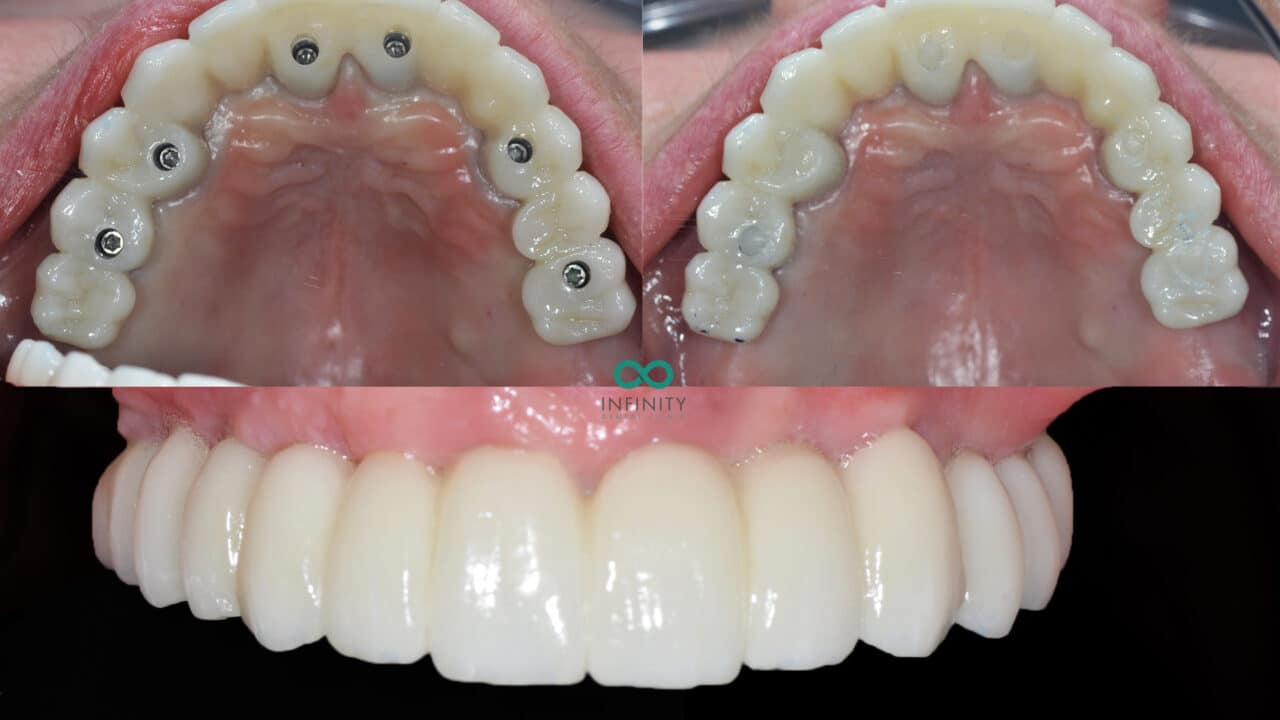The 30-Second Trick For Dental Sense
The 30-Second Trick For Dental Sense
Blog Article
About Dental Sense
Table of ContentsThe Of Dental SenseGetting My Dental Sense To WorkGetting My Dental Sense To WorkDental Sense - Truths
are medical gadgets surgically implanted into the jaw to recover a person's capability to eat or their look. They offer support for artificial (phony) teeth, such as crowns, bridges, or dentures. When a tooth is shed because of injury or disease, a person can experience difficulties such as quick bone loss, defective speech, or adjustments to eating patterns that cause pain.Dental dental implant systems contain a dental implant body and oral implant joint and may also consist of a joint fixation screw. Dental implant vs bridge. The oral implant body is surgically inserted in the jawbone instead of the tooth's root. The dental implant abutment is typically affixed to the implant body by the abutment fixation screw and prolongs through periodontals right into the mouth to support the attached artificial teeth
(http://peterjackson.mee.nu/do_you_ever_have_a_dream#c2310)Structure of The Oral Implant System picking oral implants, speak with your oral service provider concerning the potential benefits and threats, and whether you are a prospect for the treatment. Points to take into consideration: Your general health is a crucial consider figuring out whether you are a good candidate for dental implants, the length of time it will take to recover, and for how long the implant might stay in location.
Smoking might affect the recovery procedure and lower the long-lasting success of the dental implant. The recovery procedure for the dental implant body might take numerous months or longer, throughout which time you commonly have a momentary abutment in place of the tooth. the oral implant procedure: Carefully adhere to the dental health guidelines offered to you by your oral provider.
The 3-Minute Rule for Dental Sense
Implant failing can lead to the need for one more operation to take care of or change the dental implant system. Brings back the ability to eat Restores cosmetic appearance Assists maintain the jawbone from reducing because of bone loss Maintains the health and wellness of the bordering bone and gum tissues Aids maintain surrounding (close-by) teeth steady Improves lifestyle Damage to surrounding natural teeth during dental implant positioning Injury to the surrounding cells throughout surgery, such as sinus perforation Injury during surgery (as an example, fracture of bordering jawbone) Inadequate function, such as really feeling like the teeth do not attack with each other normally A feeling that the tooth is loosened or twisting in place resulting from an abutment screw loosening Implant body failure (looseness of the implant body) because of systemic infection, which may be more probable in patients with unchecked diabetics issues due to local infection in bone and gum tissues supporting the implant body due to postponed healing, which might be more likely in clients who smoke Trouble cleaning the gums around the implant, resulting in bad oral hygiene Untreated gum illness Post-surgical feeling numb as a result of nerve impingement or damages Always alert health treatment service providers and imaging service technicians that you have oral implants prior to any type of magnetic resonance imaging (MRI) or x-ray treatments.
FDA is not knowledgeable about any type of negative events reported for MRI or x-ray procedures with oral implants. Oral implants systems are usually made of materials that comply with worldwide consensus requirements of the International Organization for Standardization (ISO) or ASTM International. These criteria have details of what makes a secure material.

A dental implant is a framework that replaces a missing out on tooth. With screw-like tools, the doctor inserts an implant into the jawbone, and it acts as a support for a man-made tooth, called a crown. A device called an abutment attaches the artificial tooth to the oral implant. The crown is customized to fit the person's mouth and match the shade of their teeth.
Some Ideas on Dental Sense You Should Know
Some individuals are not eligible for dental implant surgical procedure. It is for dental specialists to operate on people with: acute illnessuncontrollable metabolic diseasebone or soft tissue disease or infectionIf these problems are fixed, a person can have the surgery. In, dental cosmetic surgeons avoid operating individuals with: If individuals with any one of the above go through oral implant surgery, there is a higher danger of the implant falling short.

Dental implant surgical treatment is a tailored procedure. Offer you time to heal. Attach the post and last crown, bridge or denture.
Next, your surgeon will carefully place the dental implant into your jaw. Your cosmetic surgeon will certainly rearrange your gums and shut the incision with stitches. If your dental implant is near the front of your mouth, your dental expert will certainly make a temporary tooth for you to use until you recover. By doing this, you will not have a void in your smile while you recover.
How Dental Sense can Save You Time, Stress, and Money.
Your provider can inform you what to anticipate in your circumstance. During the recovery phase, your jawbone needs to fuse to the dental implant. This procedure, called osseointegration, is important for stability and long-term success. This procedure can take anywhere from three to 9 months. In many cases, it might take longer.
Once your dental implant heals, your dental practitioner can connect the abutment (tiny adapter blog post) and your final reconstruction (crown, bridge or denture). This typically takes their explanation about one hour to complete and might need a second small surgical procedure. You shouldn't really feel any discomfort during your oral implant treatment because your company will utilize medicine to numb your periodontals.
Report this page